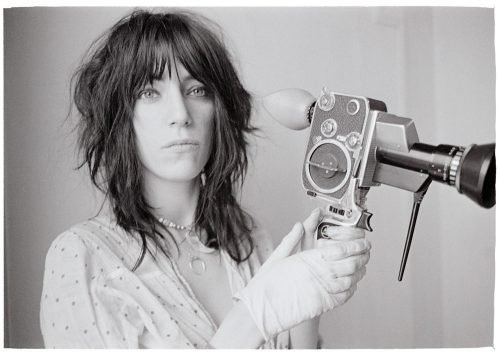In the dimly lit expanse of CBGB, amidst the raw pulse of punk that defined New York’s underground, Patti Smith stood as a figure both commanding and ethereal. Her performance—a frenetic, almost spiritual act—saw her voice oscillating between raspy melodies and sharp, spoken declarations, embodying both a rockstar’s energy and a poet’s soul. Smith, often crowned the “punk poet laureate,” has woven an indelible thread through the fabric of rock music, knitting together strands of raw, guitar-driven punk with the intricate tapestry of poetic recitation.
Patti Smith emerged in the 1970s as a trailblazing artist, her debut album “Horses” becoming a totem of artistic fusion that many tried, but few could replicate. In her world, lyrics are not merely sung; they are felt, spoken, and hurled into existence with a force that pierces the listener’s heart. Her approach is not just about musicality but about a resonance that echoes through the listener’s own emotional spectrum.
Historical Context and Artistic Influences
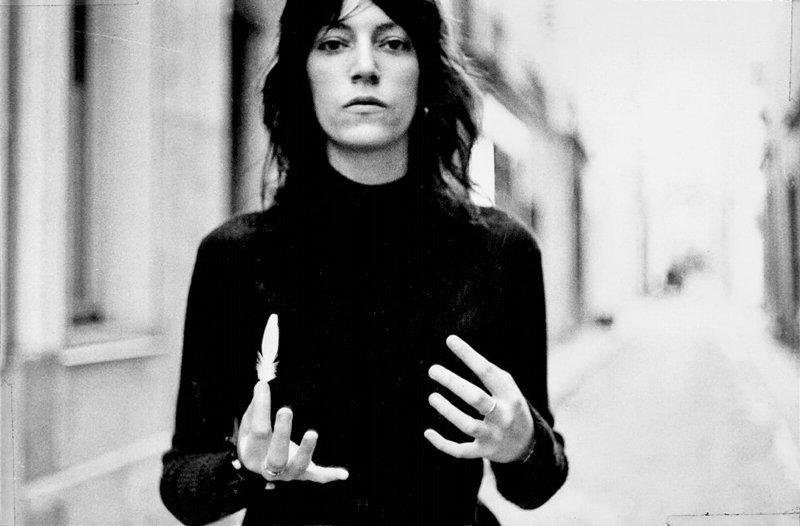
Biographical Sketch
Born in Chicago in 1946 and raised in New Jersey, Patti Smith’s journey from a factory worker to a rock and roll icon is as unconventional as her music. Early exposure to religion and a deep, intrinsic love for art and literature provided the foundation for her eclectic creative expressions. Smith moved to New York City in 1967, a pivotal decision that immersed her in the flourishing arts scene of the late 60s and early 70s. There, her transformation from a poet and visual artist to a rock musician began, marked vividly by her frequent performances at the legendary CBGB club alongside other burgeoning artists.
Influences
Patti Smith’s artistic persona is a tapestry woven with threads of 20th-century music and literature. She has often credited Bob Dylan as a profound influence—not just musically but in shaping her artistic voice and vision. Dylan’s ability to merge poetic depth with popular music resonated with Smith, inspiring her to blend her poetic prowess with the burgeoning energy of rock music.
Literature, too, played a crucial role in forming her lyrical and vocal style. Arthur Rimbaud, the French poet known for his surreal and often tumultuous verse, captivated Smith. His passion for revolutionizing poetry through intense, dreamlike imagery and his disdain for conventional aesthetics mirrored her own desires for musical and lyrical innovation. Rimbaud’s influence is palpable in Smith’s work, seen in her complex lyrical constructs and the evocative, almost otherworldly narratives she crafts within her songs.
The fusion of these influences—Dylan’s musical innovation and Rimbaud’s poetic intensity—gave rise to Smith’s distinctive style that straddles the realms of rock music and spoken word poetry. This unique blend not only defines her musical identity but also marks her as a pioneer who expanded the boundaries of what rock music could embody and convey.
Technical Analysis of Smith’s Vocal Technique

Vocal Characteristics
Patti Smith’s voice is a distinct fusion of raw power and delicate nuance, an instrument wielded with both precision and abandon. Her vocal range, while not expansive in a classical sense, is profoundly expressive, capable of conveying a vast emotional landscape. Smith’s tone is often marked by a raspy quality, imbuing her songs with a texture that is both earthy and ethereal. This unique vocal timbre serves as a perfect conduit for her blend of music and poetry, allowing her to transition seamlessly between melodic singing and forceful, spoken declarations.
Dynamic variations are central to Smith’s vocal delivery. She employs a broad dynamic range—from whisper-quiet murmurs to soul-stirring, powerful crescendos. This ability to modulate her voice not only enhances the emotional impact of her songs but also reflects the thematic shifts within her lyrics. For instance, in “Birdland,” her voice fluctuates between gentle narrations to soaring heights, mirroring the song’s narrative progression from tender reflection to intense yearning.
Integration of Spoken Word
A pivotal aspect of Patti Smith’s vocal style is her integration of spoken word into the fabric of her music. This technique is not merely an artistic choice but a bridge between her identities as a poet and a musician. In tracks like “Land,” Smith’s spoken word segments are interspersed with traditional singing in a manner that blurs the lines between recital and song. Here, her spoken words are rhythmic yet freeform, enhancing the narrative quality of the music and allowing her to emphasize certain phrases or ideas with greater impact.
Another notable example is “Gloria,” where she begins with the provocative line, “Jesus died for somebody’s sins, but not mine.” This spoken introduction sets a rebellious, defiant tone that carries through the rest of the song. The transition from spoken word to singing is fluid, showcasing her skill in using her voice as a versatile storytelling tool.
Moreover, in “Pissing in a River,” Smith combines singing with spoken passages to create a dialogue between the two modes of expression. This interaction not only highlights her poetic lyrics but also amplifies the emotional gravity of the song, making the listener feel every plea and proclamation.
Emotional and Lyrical Impact
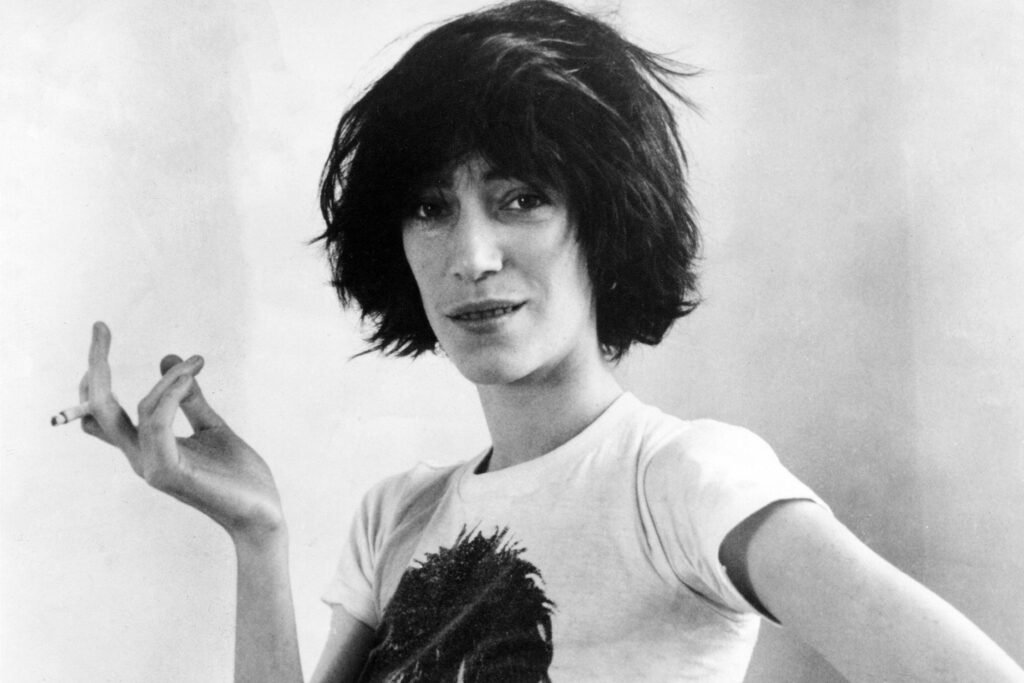
Lyrical Content
Patti Smith’s lyrics are a canvas painted with themes of rebellion, spirituality, identity, and human connection, infused with literary allusions and personal narratives. Her poetic prowess shines through in her ability to craft imagery that is not only visually evocative but also deeply symbolic. In “Birdland,” for instance, her references to Wilhelm Reich and his son Peter weave a tapestry of loss and longing, underpinned by a metaphysical quest for connection beyond the earthly realm. The power of her lyrics lies in their ability to oscillate between the intensely personal and the universally resonant, often within the same verse.
Smith’s vocal delivery is integral to the impact of her lyrical content. Her ability to modulate her voice—from a tender whisper to a commanding shout—allows her to highlight certain phrases, drawing attention to the deeper meanings within her words. In “Dancing Barefoot,” her voice swells and recedes with the lyrical flow, accentuating the spiritual and sensual ecstasy described in the song. This dynamic delivery not only captivates the listener but also enhances the emotional depth and complexity of her lyrics.
Emotional Connection
Patti Smith’s unique vocal style creates a profound emotional connection with her audience. Her voice, characterized by an unmistakable blend of rawness and refinement, acts as a conduit for the expression of deep-seated feelings and ideas. This connection is particularly palpable in live performances, where her spontaneous interaction with the music and the audience turns each performance into a shared emotional journey.
The visceral experience of listening to Smith is exemplified in her rendition of “Because the Night.” The passion and intensity of her voice, coupled with the poignant longing expressed in the lyrics, envelop the listener in a shared experience of yearning and fulfillment. Her performance transcends mere auditory reception, engaging the listener on an emotional and almost spiritual level.
Furthermore, the integration of spoken word elements into her music enhances this emotional connection. By breaking the conventional boundaries of song structure and delivery, Smith invites her audience into a more intimate space, where the spoken word serves as a direct dialogue between her inner world and the listener. This approach not only deepens the emotional resonance of her music but also establishes a powerful, empathetic link with her audience, making her performances a cathartic release for both herself and her listeners.
Iconic Performances and Recordings
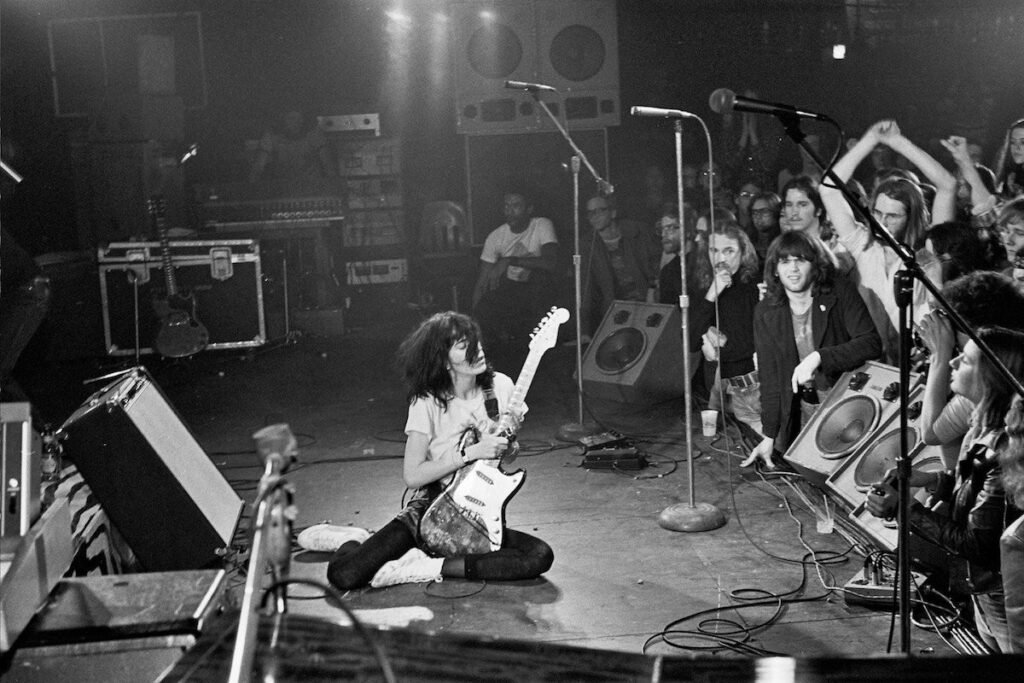
Live Performances
Patti Smith’s live performances are legendary, not only for her vocal prowess but also for her magnetic stage presence, which transforms each concert into a profound communal experience. One of the most iconic moments in her live performance history is her intense rendition of “Horses” at the CBGB in 1975. This performance is quintessentially Smith—combining raw energy, poetic grace, and a palpable connection with the audience. Her ability to engage with the crowd, channeling the collective energy back into her vocal delivery, underscores her reputation as a mesmerizing live performer.
Another significant performance was at the Isle of Wight Festival in 2015, where Smith celebrated the 40th anniversary of “Horses.” Returning to these roots in a live setting, Smith demonstrated her undiminished ability to capture and convey deep emotions, intertwining her seasoned voice with a youthful vigor as if rekindling the flames of her earlier punk poet days.
Notable Tracks
Patti Smith’s discography is replete with tracks where her unique vocal style is especially impactful. “Birdland” from her debut album “Horses” is a prime example. This track, inspired by Peter Reich’s book “A Book of Dreams,” showcases Smith’s ability to blend singing with spoken word to narrate a story that is both personal and cosmic. Her voice travels through various emotional landscapes, enhancing the narrative with a vocal intensity that shifts from whispering confessions to soaring declarations.
“Gloria” is another seminal track that underscores her vocal impact. Beginning with the declarative spoken line, “Jesus died for somebody’s sins but not mine,” Smith sets a rebellious tone that carries throughout the song. Her voice, raw and unfiltered, perfectly captures the spirit of defiance and liberation that the lyrics convey. The transition from spoken word to singing is seamless and powerful, illustrating her skill in using her voice as an instrument of artistic expression.
Additionally, “Because the Night,” co-written with Bruce Springsteen, remains one of her most beloved tracks, notable for its more structured melodic style compared to her other works. Here, Smith’s voice adopts a tender yet forceful quality that perfectly complements the love-laden lyrics, proving her versatility in handling both the poetic and the poignant.
Legacy and Cultural Impact
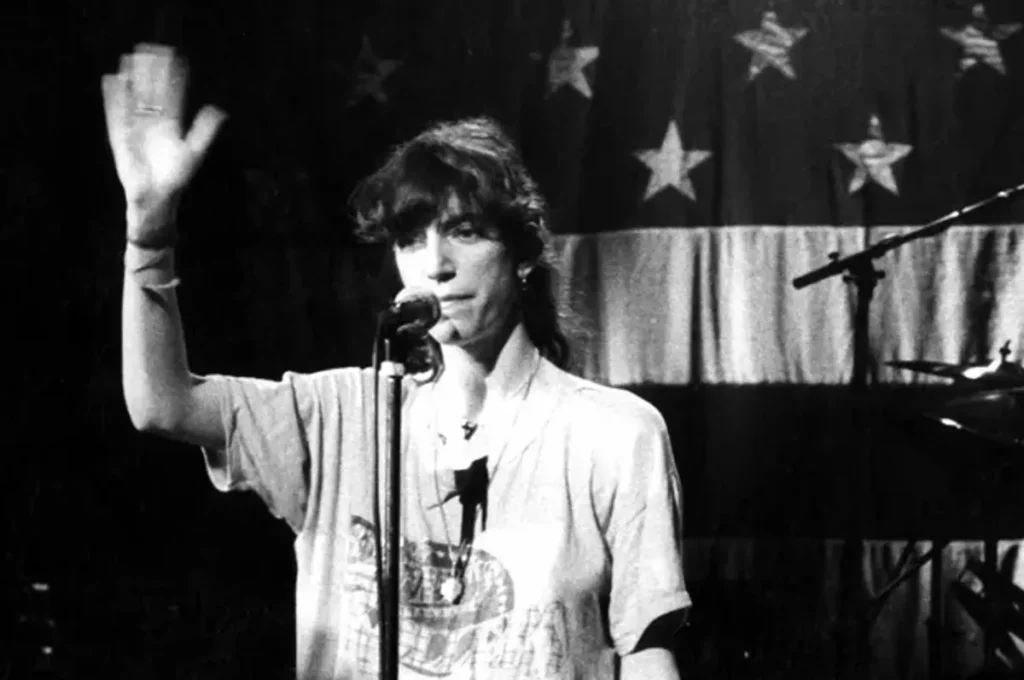
Influence on Music and Culture
Patti Smith’s fusion of rock and poetry did not just create a new aesthetic in music; it spearheaded a cultural shift that redefined the boundaries of punk and alternative rock. Her debut album “Horses,” released in 1975, is often heralded as a seminal work that challenged the then-prevailing norms of the music industry. It introduced a form of punk that was introspective yet defiant, blending raw sonic energy with deep lyrical introspection. This blend influenced a plethora of artists in the punk genre, from The Smiths and R.E.M. to later bands like Sonic Youth and PJ Harvey, who all cite Smith as a key influence on their work.
Smith’s approach to music and performance also contributed significantly to the empowerment of women in the rock genre, providing a blueprint for how female artists could express power and vulnerability simultaneously. Her style and persona helped to dismantle the traditional gender roles within rock music, paving the way for a more diverse and inclusive musical landscape.
Continued Relevance
Decades after her initial foray into the music scene, Patti Smith’s vocal style and artistic approach continue to resonate with contemporary audiences and artists alike. Her commitment to authenticity and emotional depth in music speaks to current trends that favor personal expression and emotional rawness over polished production. Artists like Florence Welch of Florence + the Machine and Courtney Barnett draw clear inspiration from Smith’s integration of poetic elements into music, using their platforms to explore complex emotional and societal themes much like Smith did.
Moreover, Smith’s music and its themes of rebellion and social commentary are particularly resonant in today’s climate of social movements. Her work has been embraced by new generations of activists and musicians who find inspiration in her unapologetic stand against social injustices and her advocacy for political and environmental issues. This enduring relevance is a testament to the timeless quality of her art and its ability to inspire and provoke thought across different eras.
In live performances and through her continued literary output, Smith maintains a vital presence in cultural discourse, her voice and messages as urgent and compelling as ever. Her legacy is not confined to the past but is a continuing influence that shapes and responds to the cultural dynamics of the present day.
Through her pioneering spirit and uncompromising artistry, Patti Smith has left an indelible mark on the landscape of music and culture. Her legacy endures, her influence ubiquitous, and her relevance undiminished by the changing tides of musical and social evolution.
